Geckos make incredible pets, as they’re both intelligent and beautiful reptiles! These small creatures are perfect pets for those without access to a backyard or a large living space. Geckos are able to climb up walls and chow down on fruit and insects with an incredibly insatiable appetite! However, some species of geckos are easier to care for than others, and make even more perfect pets! To get an idea on which type of gecko is best suited to your specific situation, read through these ten types! If you’ve been thinking about adding a reptilian friend to your home, look no further!
10. Giant Day Gecko
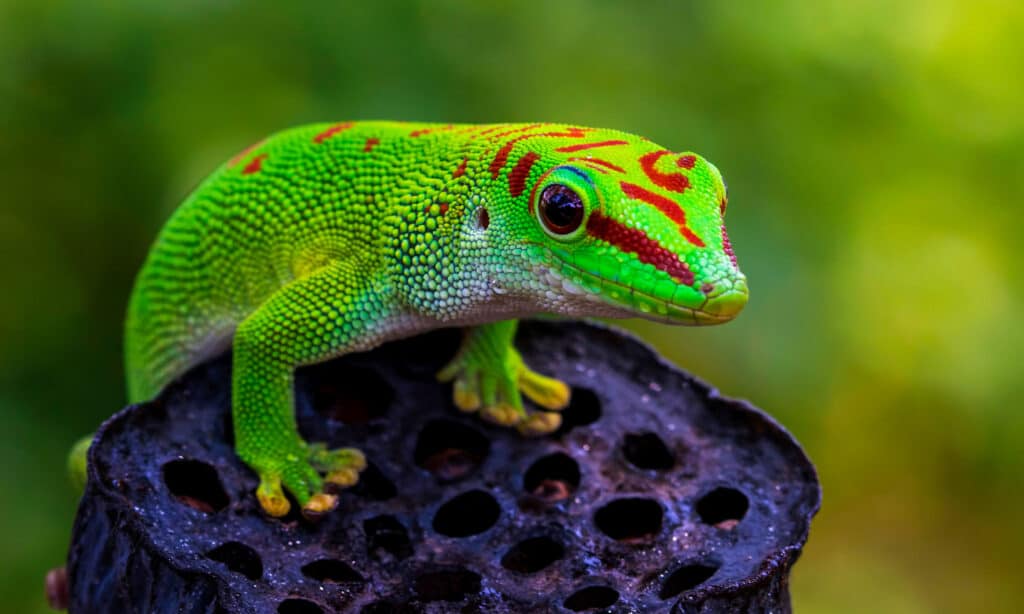
©Kurit afshen/Shutterstock.com
As their name would suggest, giant day geckos are the second largest type of gecko on this list behind leachie geckos. As with leachie geckos, this necessitates a larger cage than many other geckos, as well as more food! Originally native to parts of Madagascar, these crafty reptiles have managed to become invasive in many other habitats. Likely due to pet owners releasing their unwanted geckos, invasive species underline why its so important to know before you buy! They have relatively small eyes for geckos, but their bright green scales make them unmissable!
9. Tokay Gecko
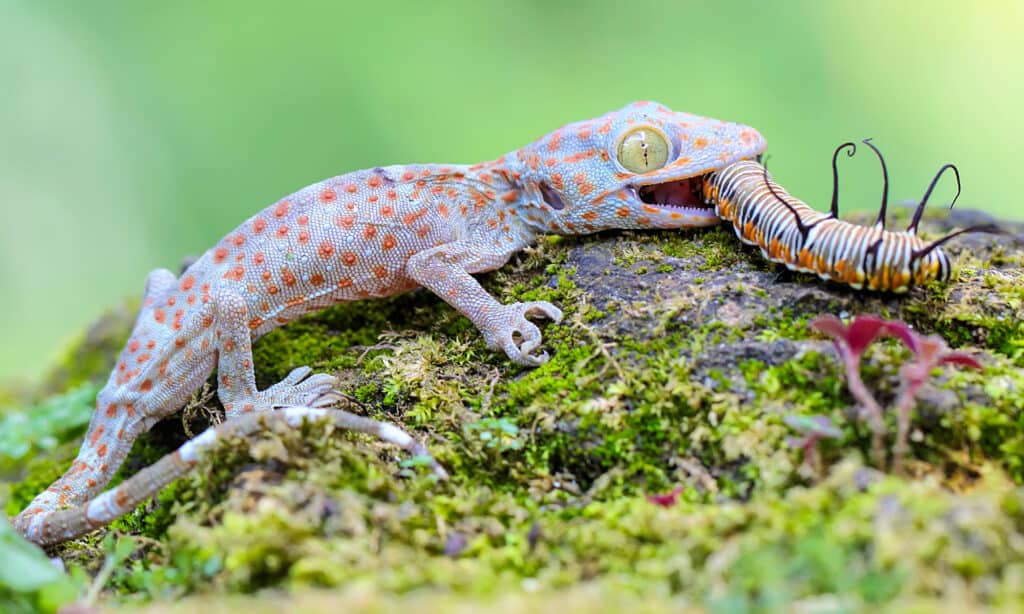
©I Wayan Sumatika/Shutterstock.com
Tokay geckos are particularly feisty and fierce! Having gained a reputation for being speedy, quick to bite, and almost a bit of a jerk, this pet will test you! Adorable and fascinating nonetheless, tokay geckos are recommended for owners with experience around reptiles and geckos especially. With patience and proper care, tokay geckos are absolutely able to be bonded with. And that process can be extremely rewarding for the right pet owners! A beautiful blueish-gray coloration with dots of fiery orange matches their personality!
8. Leachie Gecko
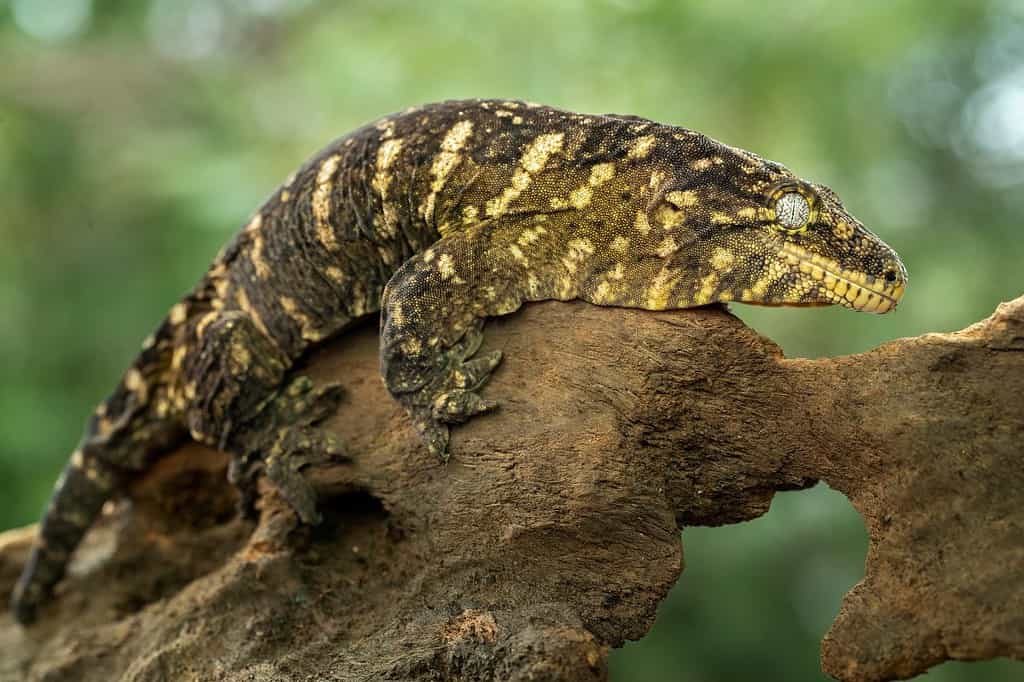
©Lauren Suryanata/Shutterstock.com
Leachie geckos are a great pet for those with some experience caring for reptiles and geckos more specifically. Also native to the New Caledonia islands east of Australia, they require a similarly hot and humid environment. An omnivorous species, leachie geckos eat a combination of wild fruits and insects in the wild.
In captivity, most types of fruit will interest leachie geckos, who eat a good amount! And they need to, being the largest species of geckos in the world! For this reason, a larger enclosure is recommended, at 120 x 60 x 120 cm minimum. Considering their arboreal nature, providing ample climbing obstacles is also a must for leachie gecko owners. They have a very unique and distinct loose and wrinkly skin.
7. Chinese Cave Gecko
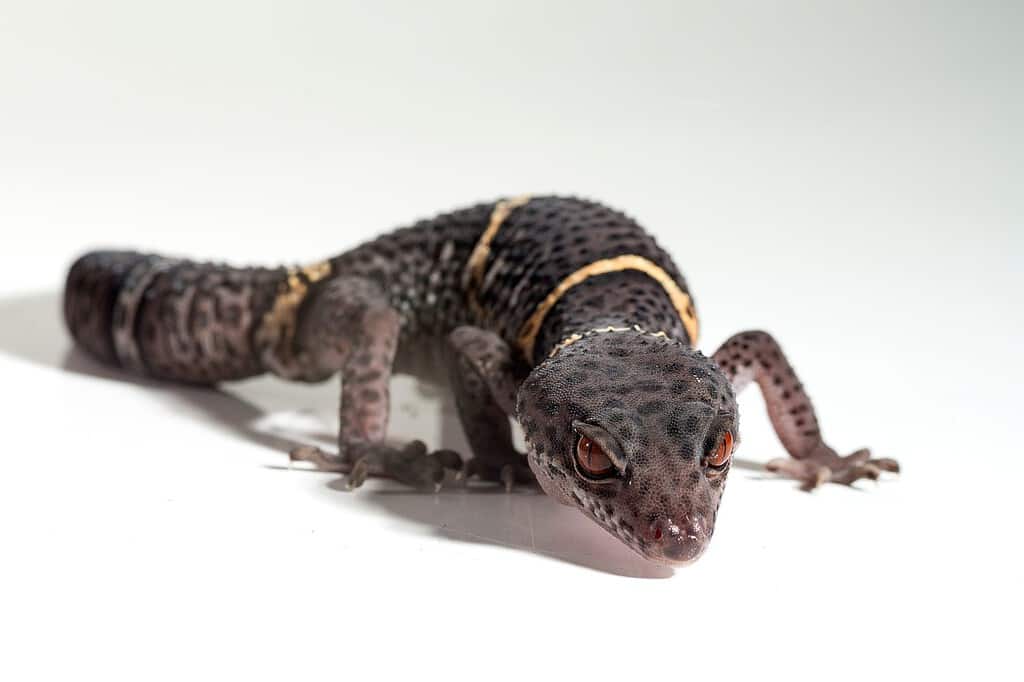
©Rafael Cuto/Shutterstock.com
Chinese cave geckos are an incredibly interesting type of geckos, being mainly carnivorous and preferring insects to fruit. With bumpy skin and a size ranging from 5 to 10 inches, their colorations can vary widely! Relatively hardy pets, chinese cave geckos are a good choice for first time reptile owners.
If taken care of correctly, these geckos can easily live for 10 years, making owning one a long-term commitment! Unique in the world of geckos, they don’t have sticky toes, so climbing isn’t their strong suit! Instead, they prefer a life on the ground, near running water and rock formations!
6. Frog-Eyed Gecko
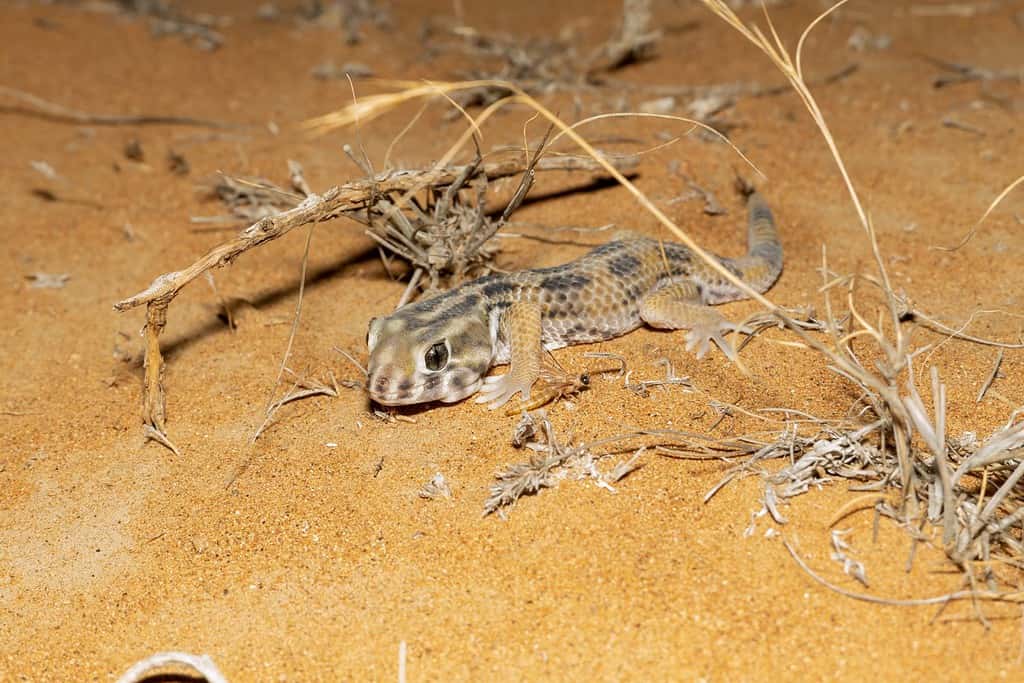
©kingma photos/Shutterstock.com
Looking down lower than the trees of the arboreal gecko species, we find the terrestrial frog-eyed gecko! Naturally found on the forest floors in Asia, these geckos can tolerate lower temperatures and higher humidity than others!
Frog-eyed geckos are the perfect pet for someone who has some experience with keeping geckos, as they’re not as tough as some others. Keeping in mind their slightly delicate nature, frog-eyed geckos tend to be more skittish and don’t enjoy being handled.
5. Fat-Tailed Gecko

©Agus_Gatam/Shutterstock.com
The fat-tailed gecko is a slightly less common type of gecko kept as a pet, but still makes for great companions! Compared to the most popular pet gecko, leopard geckos, fat-tailed geckos have larger eyes and smaller snouts. And as their name would suggest, they feature ‘fat tails’, which store a fat reserve to keep them satiated.
As far as caretaking goes, these geckos are similar to leopard geckos. But one major difference is their appreciation of occasional humidity. For this reason a moss-box or slightly more humid enclosure in general helps keep them healthy and happy.
4. Gargoyle Gecko
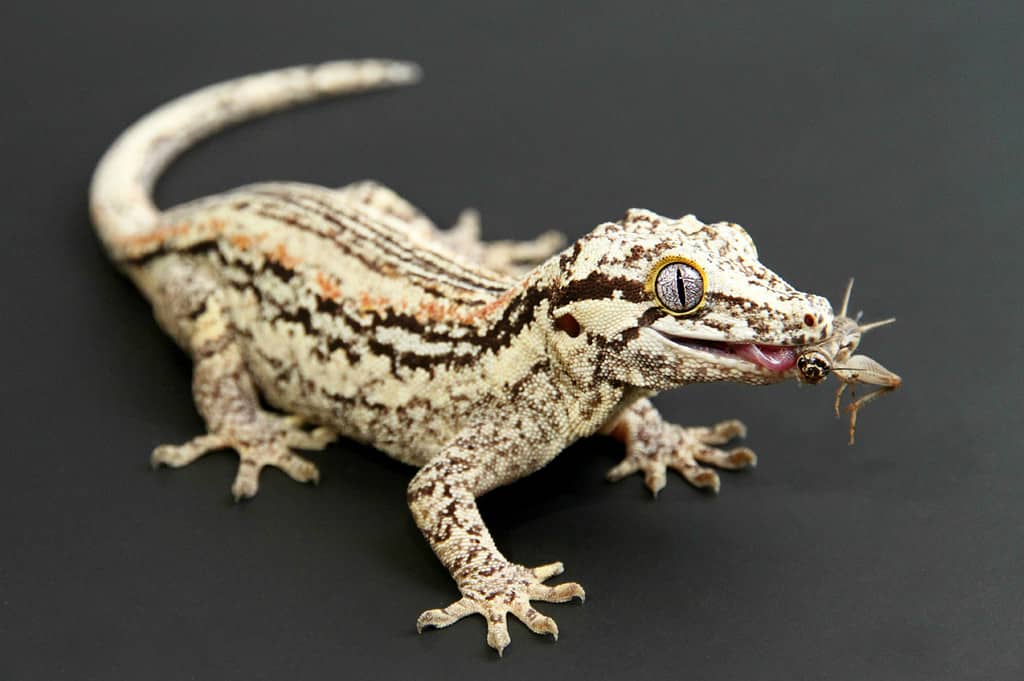
©Naturesauraphoto/Shutterstock.com
Another very popular species of geckos due to their coloration and personality are the gargoyle gecko! Like with the leopard gecko, their name gives away a hint on their appearance! Covered in beautiful light and dark gray patterning, these friendly geckos are rarely skittish and enjoy attention!
With an adorable and natural chubby belly, these small reptiles make surprisingly cute pets! Like many geckos, they naturally come in colors adapted for camouflage. But there have been specially bred varieties that come in bright colors.
3. Mourning Gecko
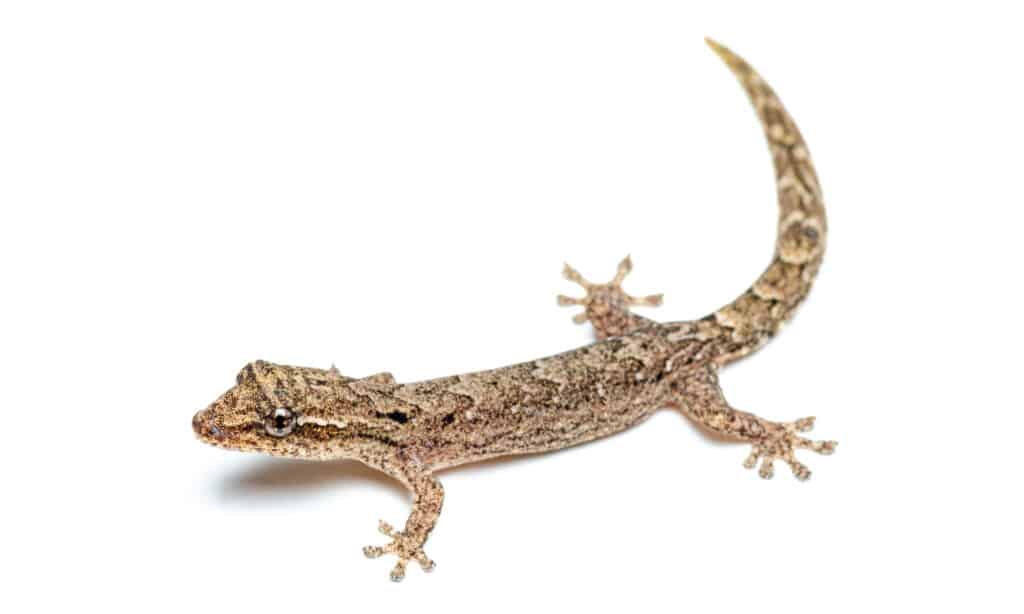
©Peter Yeeles/Shutterstock.com
The mourning gecko gets its name from a misunderstanding of the species upon its discovery. Only finding female geckos, researchers named the species due to a belief they were ‘mourning’ their male counterparts. As it turns out though, the mourning gecko is an entirely female species! How is this possible? Through a process called parthenogenesis, this species can asexually reproduce without a mate!
Their unique reproductive process sadly makes this species a popular food source for larger reptilian pets. But they make incredible pets themselves! The eggs of mourning geckos are salt-water resistant, which may help explain their huge range of habitat! Found in Asia, South America, Central America, and even Hawaii, mourning geckos are the most widely spread geckos on earth!
2. Crested Gecko

©PetlinDmitry/iStock / Getty Images Plus via Getty Images
Nearly matching the popularity of leopard geckos, crested geckos are another commonly kept pet! Particularly noticeable are the crests behind their eyes and down their back, giving them their ‘crested’ name! Fascinatingly, these geckos were believed to be extinct until 1994, when a tropical storm revealed them again! Now, populations in captivity as well as in the wild are thriving! These dragon-looking lizards are native to the islands of New Caledonia, off the eastern coast of Australia.
Crested geckos are omnivorous, with a diet of mainly fruit with the occasional insect! For pet owners who would rather not feed their pet live insects, the crested gecko is the perfect solution! Rarely aggressive, these geckos are easy to handle and form bonds with. Additionally, they require relatively low levels of heat compared to other gecko species. This makes them perfect candidates to join existing bio-active terrariums without much fuss!
1. Leopard Gecko
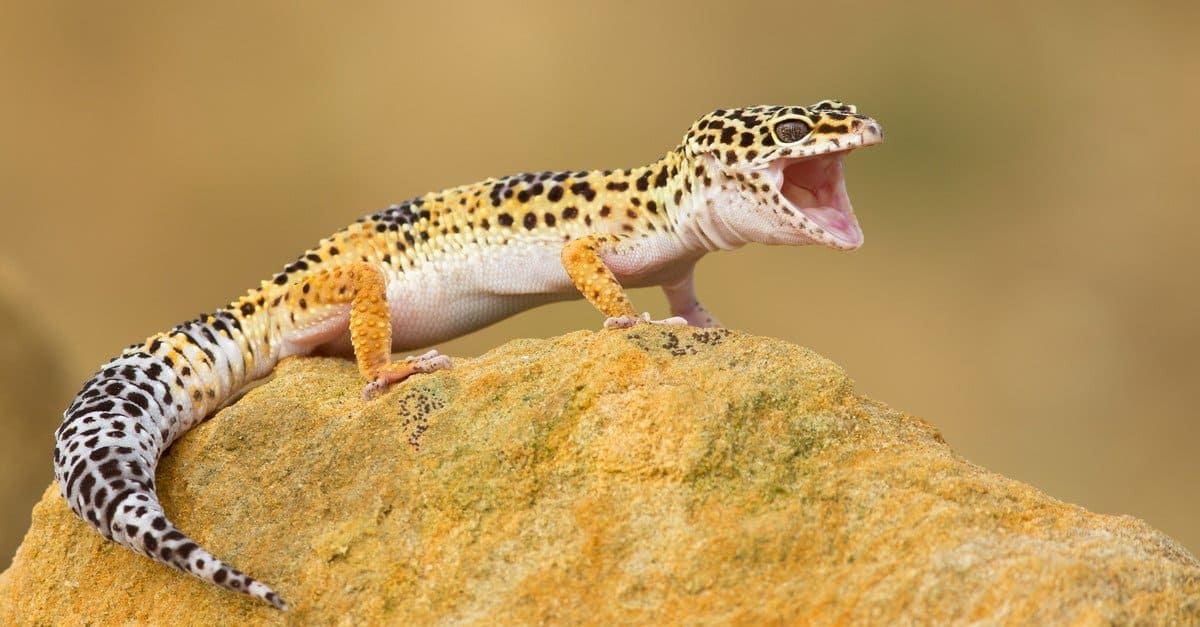
©Milan Zygmunt/Shutterstock.com
Likely the most popular type of gecko to keep as a pet, Leopard Geckos are beautifully colored with great personalities! As their name would suggest, they sport a yellow and black coloration, with spots and blotches, much like a leopard! Unlike a leopard though, these friendly small reptiles are peaceful pets! Unlikely to bite or run away when being handled, Leopard Geckos truly fit the bill of being a perfect pet.
A nocturnal species native to the Himalayan grasslands, in nature these geckos will only emerge during dusk. Basking in the fading sun to warm up, they then head out into the night to hunt under the cover of darkness! These lifestyle patterns generally hold true, but in captivity leopard geckos are much more likely to be active during the day. As their natural habitat would suggest, they require much heat and low humidity levels.
The photo featured at the top of this post is © Rafael Cuto/Shutterstock.com
Thank you for reading! Have some feedback for us? Contact the AZ Animals editorial team.







